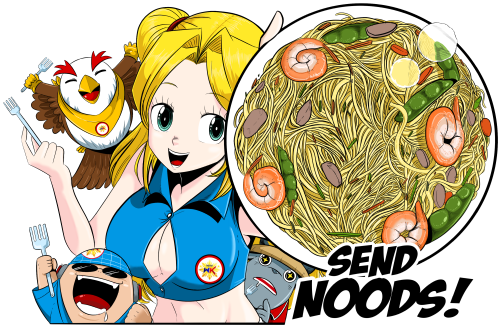[caption id="attachment_93644" align="alignnone" width="300"] Fanart by: LawCal Arts[/caption]
SPECIAL CHAPTER 3
In these special chapters, I will introduce you to the characters and/or creatures in the story...
I will give you their descriptions according to my research from various resources such as apps like Philippine Mythology and some sites like Aswang Project and Wikipedia. Except for the villains such as the *Deadly Sins* because they are my Own Characters and just a product of my imagination. I base all the creatures in my story from the Philippine Mythology.
*LAKSURYA – The LUST of the Deadly Sins*
Since Gula is attracted to people who are eating without satisfaction...
LAKSURYA on the other hand, is attracted to people who are not satisfied in their romantic relationship. Especially those Perverts, Cheaters, Play boys and Play girls. But she dislikes those Innocent Virgin people.
Laksurya's appearance is mostly from manananggal but she also have snakes as hair like Medusa or Valentina.
MANANANGGAL - The manananggal is described as scary, often hideous, usually depicted as female, and always capable of severing its upper torso and sprouting huge bat-like wings to fly into the night in search of its victims. The word manananggal comes from the Tagalog word tanggal, which means "to remove" or "to separate", which literally translates as "remover" or "separator". In this case, "one who separates itself". The name also originates from an expression used for a severed torso. The manananggal is said to favor preying on sleeping, pregnant women, using an elongated proboscis-like tongue to suck the hearts of fetuses, or the blood of someone who is sleeping. The severed lower torso is left standing, and is the more vulnerable of the two halves. Sprinkling salt, smearing crushed garlic or ash on top of the standing torso is fatal to the creature. The upper torso then would not be able to rejoin itself and would perish by sunrise. The myth of the Manananggal is popular in the Visayan region of the Philippines, especially in the western provinces of Capiz, Iloilo, and Antique. There are varying accounts of the features of a manananggal. Like vampires, Visayan folklore creatures, and aswangs, manananggals are also said to abhor garlic and salt. They were also known to avoid daggers, light, vinegar, spices and the tail of a stingray, which can be fashioned as a whip. Folklore of similar creatures can be found in the neighbouring nations of Indonesia and Malaysia. The province of Capiz is the subject or focus of many manananggal stories, as with the stories of other types of mythical creatures, such as ghosts, goblins, ghouls generically referred to as aswangs. Sightings are purported here, and certain local folk are said to believe in their existence despite modernization. The manananggal shares some features with the vampire of Balkan folklore, such as its dislike of garlic, salt, and vulnerability to sunlight.
KINARA/KINARI
- are described as gentle creatures, loyal and subservient, and are depicted of having a beautiful face and the upper body of a slender woman or boy with wings, or can transform its hands and limbs into feathered wings for flight and the lower body of a bird description varies. Kinaras are skilled dancers and musicians performing solely for their lover.
The kinara or kinari are the devoted lover with the beautiful face and body of a woman (sometimes a boy), with feathered wings and claws, who will love and devotedly serve the mortal they have fallen in love with, and when their hearts get broken, they turn into winged monsters that feed on blood called mandurugo in pre-colonial Philippines. Kinnaraor kinarri are symbols of androgynous beauty and of a lover's devotion, a symbol of ethereal beauty and undying devotion towards a lover. Pre-colonial gold has been found depicting such otherworldly beauty. In Philippine epics and folklore kinara or kinari usually guards a jar of treasure but is actually guarding the remains of his human lover, since pre-colonial Philippines people bury their deceased in jars along with their gold and precious stones.
~GARUDA~
Garuda is a large birdlike creature, or humanoid bird with muscular upper body of a man but the face and large wings of the great eagle who is believed to eat men. This mythical creature has a shared mythology with other South East Asian folklore, particularly from Thailand and Indonesia.
The Maranao people of southern Philippines believe in a race of creatures called garuda who dwell beneath the sea. These beings are winged, have big teeth, and huge talons that can carry six men. They look like eagles when flying in the sky but transform into humans when in their lairs.
~TIKBALANG~
The Tikbalang (/ˈtikbaˌlaŋ/) (also Tigbalang, Tigbalan, Tikbalan, Tigbolan, or Werehorse) is a creature of Philippine folklore said to lurk in the mountains and forests of the Philippines. It is a tall, bony humanoid creature with the head and hooves of a horse and disproportionately long limbs, to the point that its knees reach above its head when it squats down. In some versions it is a transformation of an aborted fetus sent to earth from limbo.
~KAPRE~
Kapre is a Philippine mythical creature that could be characterized as a tree giant. It is described as being a tall (7 to 9 ft), big, black, hairy, muscular creature. Kapres are normally described as having a strong smell that would attract human attention. The term kapre comes from the Arabic "kafir", meaning a non-believer in Islam. The early Arabs and the Moors used it to refer to the non-Muslim people. The term was later brought to the Philippines by the Spanish who had previous contact with the Moors. Some historians speculate that the legend was propagated by the Spanish to prevent Filipinos from assisting any escaped African slaves they sometimes imported from Latin-America. The Kapre itself holds a large Cigar, an item which originated from the ancient Mayans of Latin-America.
~NUNO SA PUNSO~
A nuno or nuno sa punso ("old man of the mound") is a dwarf-like creature in Philippine mythology. It is believed to live in an anthill or termite mound, hence its name, literally 'Ancestor/Grandparent living in the anthill'.
"The "nono" are the spirits of old persons. When a tree is to be felled, or a piece of virgin ground broken, and on many other occasions, permission is asked of the nono. Should this precaution be neglected misfortune will surely ensue." The nuno is described to be a small old man with a long beard, and differs from a duwende or dwarf of Philippine folklore. The duwende is a playful hobgoblin who shows himself to children, while the nuno is a goblin easily angered and will do harm to those who damage or disturb his mound. If an invader destroys the nuno's home by kicking it, the offender's foot will become swollen. Nuno sa punso are also believed to inhabit places such as underneath large rocks, trees, riverbanks, caves, or a backyard.
☆ ☆ THIS IS A PROUD MEMBER OF,. ☆ ☆
Fanart by: LawCal Arts[/caption]
SPECIAL CHAPTER 3
In these special chapters, I will introduce you to the characters and/or creatures in the story...
I will give you their descriptions according to my research from various resources such as apps like Philippine Mythology and some sites like Aswang Project and Wikipedia. Except for the villains such as the *Deadly Sins* because they are my Own Characters and just a product of my imagination. I base all the creatures in my story from the Philippine Mythology.
*LAKSURYA – The LUST of the Deadly Sins*
Since Gula is attracted to people who are eating without satisfaction...
LAKSURYA on the other hand, is attracted to people who are not satisfied in their romantic relationship. Especially those Perverts, Cheaters, Play boys and Play girls. But she dislikes those Innocent Virgin people.
Laksurya's appearance is mostly from manananggal but she also have snakes as hair like Medusa or Valentina.
MANANANGGAL - The manananggal is described as scary, often hideous, usually depicted as female, and always capable of severing its upper torso and sprouting huge bat-like wings to fly into the night in search of its victims. The word manananggal comes from the Tagalog word tanggal, which means "to remove" or "to separate", which literally translates as "remover" or "separator". In this case, "one who separates itself". The name also originates from an expression used for a severed torso. The manananggal is said to favor preying on sleeping, pregnant women, using an elongated proboscis-like tongue to suck the hearts of fetuses, or the blood of someone who is sleeping. The severed lower torso is left standing, and is the more vulnerable of the two halves. Sprinkling salt, smearing crushed garlic or ash on top of the standing torso is fatal to the creature. The upper torso then would not be able to rejoin itself and would perish by sunrise. The myth of the Manananggal is popular in the Visayan region of the Philippines, especially in the western provinces of Capiz, Iloilo, and Antique. There are varying accounts of the features of a manananggal. Like vampires, Visayan folklore creatures, and aswangs, manananggals are also said to abhor garlic and salt. They were also known to avoid daggers, light, vinegar, spices and the tail of a stingray, which can be fashioned as a whip. Folklore of similar creatures can be found in the neighbouring nations of Indonesia and Malaysia. The province of Capiz is the subject or focus of many manananggal stories, as with the stories of other types of mythical creatures, such as ghosts, goblins, ghouls generically referred to as aswangs. Sightings are purported here, and certain local folk are said to believe in their existence despite modernization. The manananggal shares some features with the vampire of Balkan folklore, such as its dislike of garlic, salt, and vulnerability to sunlight.
KINARA/KINARI
- are described as gentle creatures, loyal and subservient, and are depicted of having a beautiful face and the upper body of a slender woman or boy with wings, or can transform its hands and limbs into feathered wings for flight and the lower body of a bird description varies. Kinaras are skilled dancers and musicians performing solely for their lover.
The kinara or kinari are the devoted lover with the beautiful face and body of a woman (sometimes a boy), with feathered wings and claws, who will love and devotedly serve the mortal they have fallen in love with, and when their hearts get broken, they turn into winged monsters that feed on blood called mandurugo in pre-colonial Philippines. Kinnaraor kinarri are symbols of androgynous beauty and of a lover's devotion, a symbol of ethereal beauty and undying devotion towards a lover. Pre-colonial gold has been found depicting such otherworldly beauty. In Philippine epics and folklore kinara or kinari usually guards a jar of treasure but is actually guarding the remains of his human lover, since pre-colonial Philippines people bury their deceased in jars along with their gold and precious stones.
~GARUDA~
Garuda is a large birdlike creature, or humanoid bird with muscular upper body of a man but the face and large wings of the great eagle who is believed to eat men. This mythical creature has a shared mythology with other South East Asian folklore, particularly from Thailand and Indonesia.
The Maranao people of southern Philippines believe in a race of creatures called garuda who dwell beneath the sea. These beings are winged, have big teeth, and huge talons that can carry six men. They look like eagles when flying in the sky but transform into humans when in their lairs.
~TIKBALANG~
The Tikbalang (/ˈtikbaˌlaŋ/) (also Tigbalang, Tigbalan, Tikbalan, Tigbolan, or Werehorse) is a creature of Philippine folklore said to lurk in the mountains and forests of the Philippines. It is a tall, bony humanoid creature with the head and hooves of a horse and disproportionately long limbs, to the point that its knees reach above its head when it squats down. In some versions it is a transformation of an aborted fetus sent to earth from limbo.
~KAPRE~
Kapre is a Philippine mythical creature that could be characterized as a tree giant. It is described as being a tall (7 to 9 ft), big, black, hairy, muscular creature. Kapres are normally described as having a strong smell that would attract human attention. The term kapre comes from the Arabic "kafir", meaning a non-believer in Islam. The early Arabs and the Moors used it to refer to the non-Muslim people. The term was later brought to the Philippines by the Spanish who had previous contact with the Moors. Some historians speculate that the legend was propagated by the Spanish to prevent Filipinos from assisting any escaped African slaves they sometimes imported from Latin-America. The Kapre itself holds a large Cigar, an item which originated from the ancient Mayans of Latin-America.
~NUNO SA PUNSO~
A nuno or nuno sa punso ("old man of the mound") is a dwarf-like creature in Philippine mythology. It is believed to live in an anthill or termite mound, hence its name, literally 'Ancestor/Grandparent living in the anthill'.
"The "nono" are the spirits of old persons. When a tree is to be felled, or a piece of virgin ground broken, and on many other occasions, permission is asked of the nono. Should this precaution be neglected misfortune will surely ensue." The nuno is described to be a small old man with a long beard, and differs from a duwende or dwarf of Philippine folklore. The duwende is a playful hobgoblin who shows himself to children, while the nuno is a goblin easily angered and will do harm to those who damage or disturb his mound. If an invader destroys the nuno's home by kicking it, the offender's foot will become swollen. Nuno sa punso are also believed to inhabit places such as underneath large rocks, trees, riverbanks, caves, or a backyard.
☆ ☆ THIS IS A PROUD MEMBER OF,. ☆ ☆
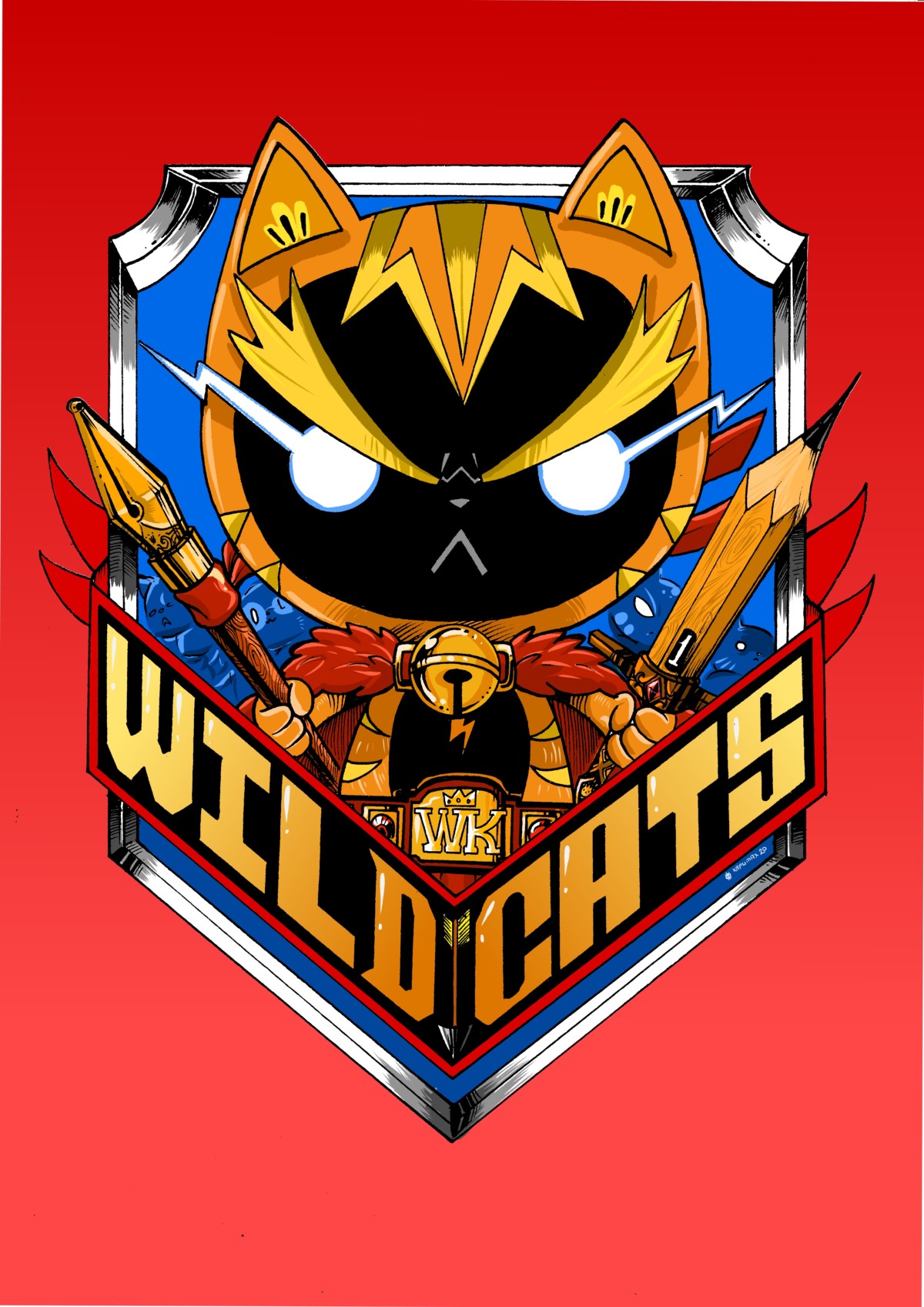


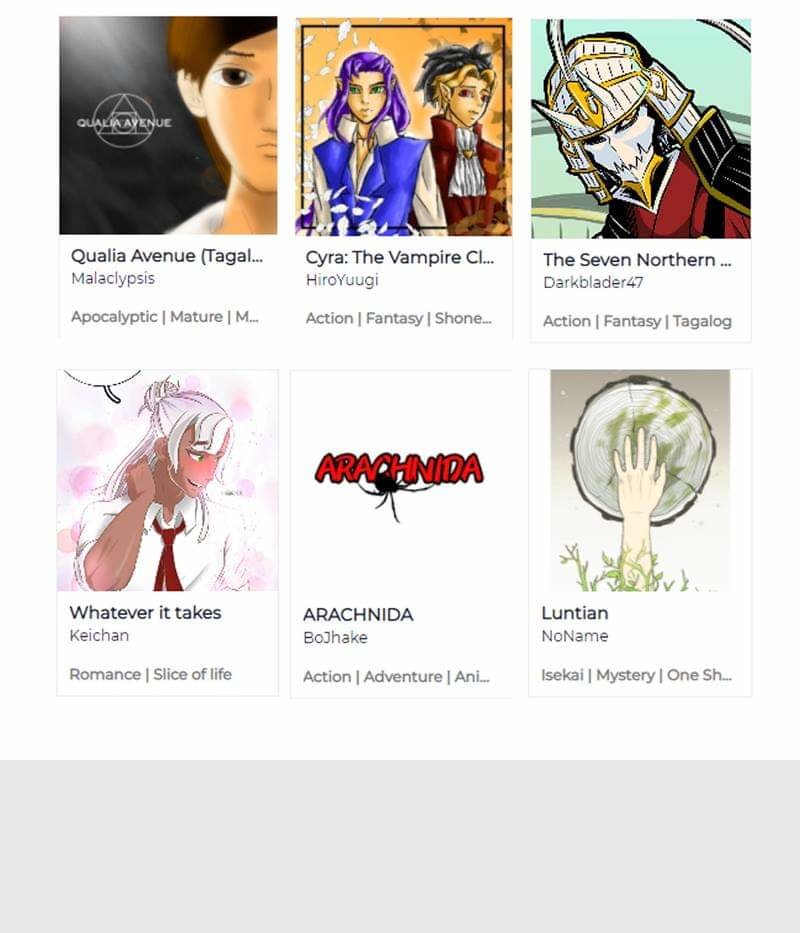
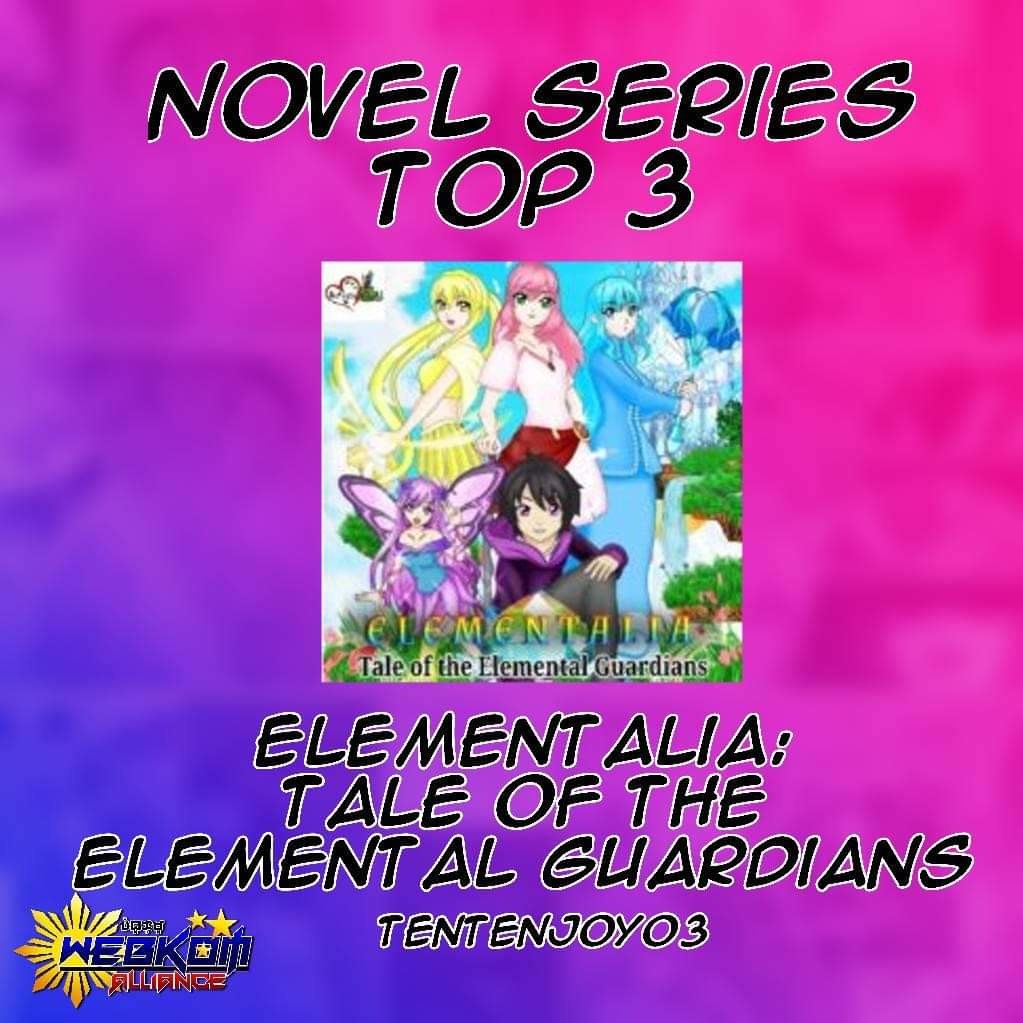 Top 3 Novel Series for the Month of June
[caption id="attachment_88801" align="alignnone" width="810"]
Top 3 Novel Series for the Month of June
[caption id="attachment_88801" align="alignnone" width="810"]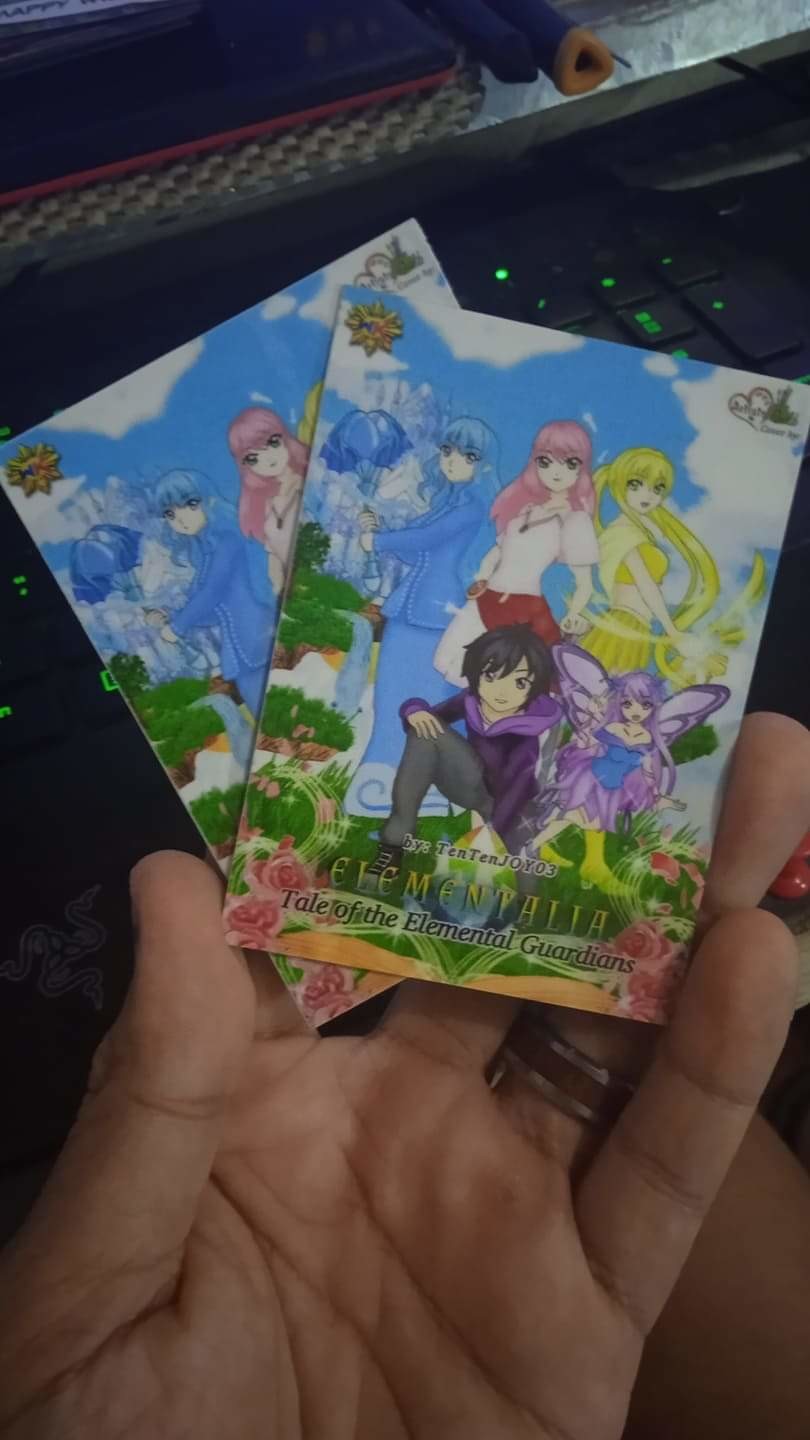 Elementalia Common Cards (Sample)[/caption]
[caption id="attachment_88802" align="alignnone" width="1200"]
Elementalia Common Cards (Sample)[/caption]
[caption id="attachment_88802" align="alignnone" width="1200"] Webkom Trading Cards (Sample Set)
Webkom Trading Cards (Sample Set)
Created and Distributed by Sir. Glenn Umil[/caption] Thank you so much for reading and supporting my novel series! It also means a lot to me! 😘😍
 Fanart by: LawCal Arts[/caption]
SPECIAL CHAPTER 3
In these special chapters, I will introduce you to the characters and/or creatures in the story...
I will give you their descriptions according to my research from various resources such as apps like Philippine Mythology and some sites like Aswang Project and Wikipedia. Except for the villains such as the *Deadly Sins* because they are my Own Characters and just a product of my imagination. I base all the creatures in my story from the Philippine Mythology.
*LAKSURYA – The LUST of the Deadly Sins*
Since Gula is attracted to people who are eating without satisfaction...
LAKSURYA on the other hand, is attracted to people who are not satisfied in their romantic relationship. Especially those Perverts, Cheaters, Play boys and Play girls. But she dislikes those Innocent Virgin people.
Laksurya's appearance is mostly from manananggal but she also have snakes as hair like Medusa or Valentina.
MANANANGGAL - The manananggal is described as scary, often hideous, usually depicted as female, and always capable of severing its upper torso and sprouting huge bat-like wings to fly into the night in search of its victims. The word manananggal comes from the Tagalog word tanggal, which means "to remove" or "to separate", which literally translates as "remover" or "separator". In this case, "one who separates itself". The name also originates from an expression used for a severed torso. The manananggal is said to favor preying on sleeping, pregnant women, using an elongated proboscis-like tongue to suck the hearts of fetuses, or the blood of someone who is sleeping. The severed lower torso is left standing, and is the more vulnerable of the two halves. Sprinkling salt, smearing crushed garlic or ash on top of the standing torso is fatal to the creature. The upper torso then would not be able to rejoin itself and would perish by sunrise. The myth of the Manananggal is popular in the Visayan region of the Philippines, especially in the western provinces of Capiz, Iloilo, and Antique. There are varying accounts of the features of a manananggal. Like vampires, Visayan folklore creatures, and aswangs, manananggals are also said to abhor garlic and salt. They were also known to avoid daggers, light, vinegar, spices and the tail of a stingray, which can be fashioned as a whip. Folklore of similar creatures can be found in the neighbouring nations of Indonesia and Malaysia. The province of Capiz is the subject or focus of many manananggal stories, as with the stories of other types of mythical creatures, such as ghosts, goblins, ghouls generically referred to as aswangs. Sightings are purported here, and certain local folk are said to believe in their existence despite modernization. The manananggal shares some features with the vampire of Balkan folklore, such as its dislike of garlic, salt, and vulnerability to sunlight.
KINARA/KINARI
- are described as gentle creatures, loyal and subservient, and are depicted of having a beautiful face and the upper body of a slender woman or boy with wings, or can transform its hands and limbs into feathered wings for flight and the lower body of a bird description varies. Kinaras are skilled dancers and musicians performing solely for their lover.
The kinara or kinari are the devoted lover with the beautiful face and body of a woman (sometimes a boy), with feathered wings and claws, who will love and devotedly serve the mortal they have fallen in love with, and when their hearts get broken, they turn into winged monsters that feed on blood called mandurugo in pre-colonial Philippines. Kinnaraor kinarri are symbols of androgynous beauty and of a lover's devotion, a symbol of ethereal beauty and undying devotion towards a lover. Pre-colonial gold has been found depicting such otherworldly beauty. In Philippine epics and folklore kinara or kinari usually guards a jar of treasure but is actually guarding the remains of his human lover, since pre-colonial Philippines people bury their deceased in jars along with their gold and precious stones.
~GARUDA~
Garuda is a large birdlike creature, or humanoid bird with muscular upper body of a man but the face and large wings of the great eagle who is believed to eat men. This mythical creature has a shared mythology with other South East Asian folklore, particularly from Thailand and Indonesia.
The Maranao people of southern Philippines believe in a race of creatures called garuda who dwell beneath the sea. These beings are winged, have big teeth, and huge talons that can carry six men. They look like eagles when flying in the sky but transform into humans when in their lairs.
~TIKBALANG~
The Tikbalang (/ˈtikbaˌlaŋ/) (also Tigbalang, Tigbalan, Tikbalan, Tigbolan, or Werehorse) is a creature of Philippine folklore said to lurk in the mountains and forests of the Philippines. It is a tall, bony humanoid creature with the head and hooves of a horse and disproportionately long limbs, to the point that its knees reach above its head when it squats down. In some versions it is a transformation of an aborted fetus sent to earth from limbo.
~KAPRE~
Kapre is a Philippine mythical creature that could be characterized as a tree giant. It is described as being a tall (7 to 9 ft), big, black, hairy, muscular creature. Kapres are normally described as having a strong smell that would attract human attention. The term kapre comes from the Arabic "kafir", meaning a non-believer in Islam. The early Arabs and the Moors used it to refer to the non-Muslim people. The term was later brought to the Philippines by the Spanish who had previous contact with the Moors. Some historians speculate that the legend was propagated by the Spanish to prevent Filipinos from assisting any escaped African slaves they sometimes imported from Latin-America. The Kapre itself holds a large Cigar, an item which originated from the ancient Mayans of Latin-America.
~NUNO SA PUNSO~
A nuno or nuno sa punso ("old man of the mound") is a dwarf-like creature in Philippine mythology. It is believed to live in an anthill or termite mound, hence its name, literally 'Ancestor/Grandparent living in the anthill'.
"The "nono" are the spirits of old persons. When a tree is to be felled, or a piece of virgin ground broken, and on many other occasions, permission is asked of the nono. Should this precaution be neglected misfortune will surely ensue." The nuno is described to be a small old man with a long beard, and differs from a duwende or dwarf of Philippine folklore. The duwende is a playful hobgoblin who shows himself to children, while the nuno is a goblin easily angered and will do harm to those who damage or disturb his mound. If an invader destroys the nuno's home by kicking it, the offender's foot will become swollen. Nuno sa punso are also believed to inhabit places such as underneath large rocks, trees, riverbanks, caves, or a backyard.
☆ ☆ THIS IS A PROUD MEMBER OF,. ☆ ☆
Fanart by: LawCal Arts[/caption]
SPECIAL CHAPTER 3
In these special chapters, I will introduce you to the characters and/or creatures in the story...
I will give you their descriptions according to my research from various resources such as apps like Philippine Mythology and some sites like Aswang Project and Wikipedia. Except for the villains such as the *Deadly Sins* because they are my Own Characters and just a product of my imagination. I base all the creatures in my story from the Philippine Mythology.
*LAKSURYA – The LUST of the Deadly Sins*
Since Gula is attracted to people who are eating without satisfaction...
LAKSURYA on the other hand, is attracted to people who are not satisfied in their romantic relationship. Especially those Perverts, Cheaters, Play boys and Play girls. But she dislikes those Innocent Virgin people.
Laksurya's appearance is mostly from manananggal but she also have snakes as hair like Medusa or Valentina.
MANANANGGAL - The manananggal is described as scary, often hideous, usually depicted as female, and always capable of severing its upper torso and sprouting huge bat-like wings to fly into the night in search of its victims. The word manananggal comes from the Tagalog word tanggal, which means "to remove" or "to separate", which literally translates as "remover" or "separator". In this case, "one who separates itself". The name also originates from an expression used for a severed torso. The manananggal is said to favor preying on sleeping, pregnant women, using an elongated proboscis-like tongue to suck the hearts of fetuses, or the blood of someone who is sleeping. The severed lower torso is left standing, and is the more vulnerable of the two halves. Sprinkling salt, smearing crushed garlic or ash on top of the standing torso is fatal to the creature. The upper torso then would not be able to rejoin itself and would perish by sunrise. The myth of the Manananggal is popular in the Visayan region of the Philippines, especially in the western provinces of Capiz, Iloilo, and Antique. There are varying accounts of the features of a manananggal. Like vampires, Visayan folklore creatures, and aswangs, manananggals are also said to abhor garlic and salt. They were also known to avoid daggers, light, vinegar, spices and the tail of a stingray, which can be fashioned as a whip. Folklore of similar creatures can be found in the neighbouring nations of Indonesia and Malaysia. The province of Capiz is the subject or focus of many manananggal stories, as with the stories of other types of mythical creatures, such as ghosts, goblins, ghouls generically referred to as aswangs. Sightings are purported here, and certain local folk are said to believe in their existence despite modernization. The manananggal shares some features with the vampire of Balkan folklore, such as its dislike of garlic, salt, and vulnerability to sunlight.
KINARA/KINARI
- are described as gentle creatures, loyal and subservient, and are depicted of having a beautiful face and the upper body of a slender woman or boy with wings, or can transform its hands and limbs into feathered wings for flight and the lower body of a bird description varies. Kinaras are skilled dancers and musicians performing solely for their lover.
The kinara or kinari are the devoted lover with the beautiful face and body of a woman (sometimes a boy), with feathered wings and claws, who will love and devotedly serve the mortal they have fallen in love with, and when their hearts get broken, they turn into winged monsters that feed on blood called mandurugo in pre-colonial Philippines. Kinnaraor kinarri are symbols of androgynous beauty and of a lover's devotion, a symbol of ethereal beauty and undying devotion towards a lover. Pre-colonial gold has been found depicting such otherworldly beauty. In Philippine epics and folklore kinara or kinari usually guards a jar of treasure but is actually guarding the remains of his human lover, since pre-colonial Philippines people bury their deceased in jars along with their gold and precious stones.
~GARUDA~
Garuda is a large birdlike creature, or humanoid bird with muscular upper body of a man but the face and large wings of the great eagle who is believed to eat men. This mythical creature has a shared mythology with other South East Asian folklore, particularly from Thailand and Indonesia.
The Maranao people of southern Philippines believe in a race of creatures called garuda who dwell beneath the sea. These beings are winged, have big teeth, and huge talons that can carry six men. They look like eagles when flying in the sky but transform into humans when in their lairs.
~TIKBALANG~
The Tikbalang (/ˈtikbaˌlaŋ/) (also Tigbalang, Tigbalan, Tikbalan, Tigbolan, or Werehorse) is a creature of Philippine folklore said to lurk in the mountains and forests of the Philippines. It is a tall, bony humanoid creature with the head and hooves of a horse and disproportionately long limbs, to the point that its knees reach above its head when it squats down. In some versions it is a transformation of an aborted fetus sent to earth from limbo.
~KAPRE~
Kapre is a Philippine mythical creature that could be characterized as a tree giant. It is described as being a tall (7 to 9 ft), big, black, hairy, muscular creature. Kapres are normally described as having a strong smell that would attract human attention. The term kapre comes from the Arabic "kafir", meaning a non-believer in Islam. The early Arabs and the Moors used it to refer to the non-Muslim people. The term was later brought to the Philippines by the Spanish who had previous contact with the Moors. Some historians speculate that the legend was propagated by the Spanish to prevent Filipinos from assisting any escaped African slaves they sometimes imported from Latin-America. The Kapre itself holds a large Cigar, an item which originated from the ancient Mayans of Latin-America.
~NUNO SA PUNSO~
A nuno or nuno sa punso ("old man of the mound") is a dwarf-like creature in Philippine mythology. It is believed to live in an anthill or termite mound, hence its name, literally 'Ancestor/Grandparent living in the anthill'.
"The "nono" are the spirits of old persons. When a tree is to be felled, or a piece of virgin ground broken, and on many other occasions, permission is asked of the nono. Should this precaution be neglected misfortune will surely ensue." The nuno is described to be a small old man with a long beard, and differs from a duwende or dwarf of Philippine folklore. The duwende is a playful hobgoblin who shows himself to children, while the nuno is a goblin easily angered and will do harm to those who damage or disturb his mound. If an invader destroys the nuno's home by kicking it, the offender's foot will become swollen. Nuno sa punso are also believed to inhabit places such as underneath large rocks, trees, riverbanks, caves, or a backyard.
☆ ☆ THIS IS A PROUD MEMBER OF,. ☆ ☆




 Top 3 Novel Series for the Month of June
[caption id="attachment_88801" align="alignnone" width="810"]
Top 3 Novel Series for the Month of June
[caption id="attachment_88801" align="alignnone" width="810"] Elementalia Common Cards (Sample)[/caption]
[caption id="attachment_88802" align="alignnone" width="1200"]
Elementalia Common Cards (Sample)[/caption]
[caption id="attachment_88802" align="alignnone" width="1200"] Webkom Trading Cards (Sample Set)
Webkom Trading Cards (Sample Set)Created and Distributed by Sir. Glenn Umil[/caption] Thank you so much for reading and supporting my novel series! It also means a lot to me! 😘😍
TenTenJOY03 Creator
